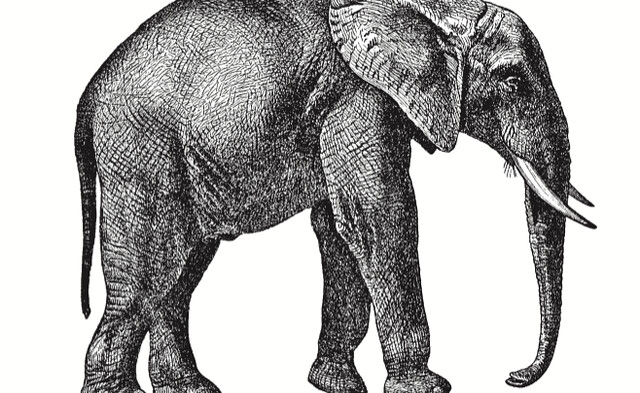African elephants are elephants of the genus Loxodonta (from the Greek words loxo (oblique sided) and donta(tooth)).[2] The genus consists of two extant species: the African bush elephant and the smaller African forest elephant. Loxodonta is one of two existing genera of the family, Elephantidae.[1] Fossil remains of Loxodonta have been found only in Africa, in strata as old as the middle Pliocene.
One species of African elephant, the bush elephant, is the largest living terrestrial animal, while the forest elephant is the third largest. Their thickset bodies rest on stocky legs, and they have concave backs.[3] Their large ears enable heat loss.[4] The upper lip and nose form a trunk. The trunk acts as a fifth limb, a sound amplifier, and an important method of touch. African elephants’ trunks end in two opposing lips,[5] whereas the Asian elephant trunk ends in a single lip.[5] In L. africana, males stand 3.2–4.0 m (10–13 ft) tall at the shoulder and weigh 4,700–6,048 kg (10,360–13,330 lb), while females stand 2.2–2.6 m (7–9 ft) tall and weigh 2,160–3,232 kg (4,762–7,125 lb);[6] L. cyclotis is smaller with male shoulder heights of up to 2.5 m (8 ft).[7] The largest recorded individual stood four metres (13.1 ft) at the shoulders and weighed 10 tonnes (10 long tons; 11 short tons).[3]
African elephant societies are arranged around family units. Each family unit is made up of around ten closely related females and their calves and is led by an older female known as the matriarch.[3] When separate family units bond, they form kinship or bond groups. After puberty, male elephants tend to form alliances with other males.
Elephants are at their most fertile between the ages of 25 and 45.[3] Calves are born after a gestation period of nearly two years. The calves are cared for by their mother and other young females in the group, known as allomothers.[3]
Elephants use some vocalisations that are beyond the hearing range of humans, to communicate across large distances. Elephant mating rituals include the gentle entwining of trunks.[19]
(From Wikipedia, February 2015)




